Don’t Make These 5 Bird Bath Mistakes If You Want More Birdies!
Love your birdlife but failing to entice many feathered visitors? Check your backyard’s bathing facilities and make sure you avoid these classic bird bath mistakes

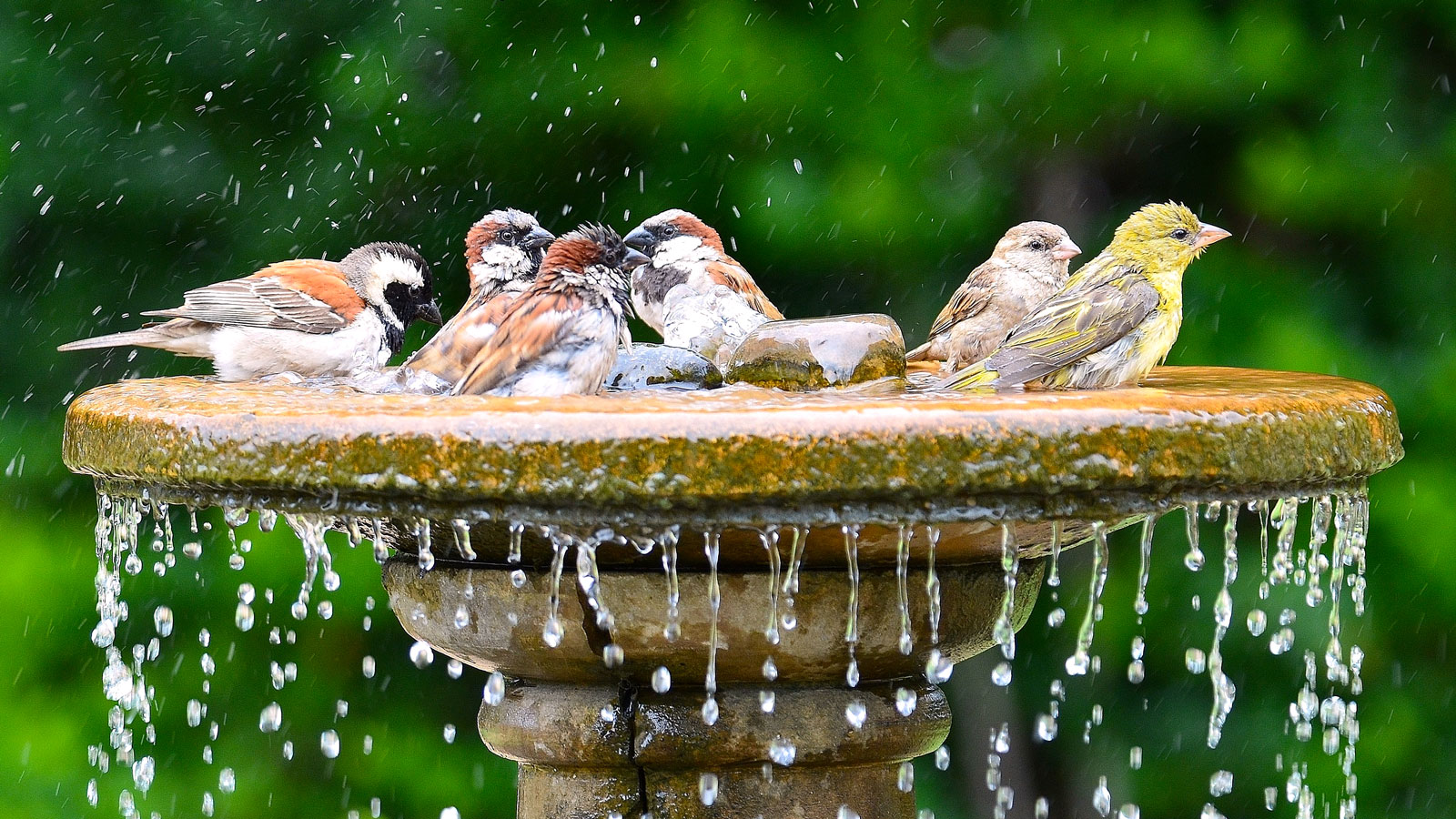
You and your bird bath probably started out with such high hopes – but if you aren’t seeing the fluttering of wings at play, chances are you’ve got sunk by one (or more) of the classic bird bath mistakes. Sorry, you may be thinking, but what was that? Surely, having invested in something sturdy and fancy, you don’t have to keep making big strides to attract the attention of bathing birdlife – do you?
The hard truth is that you can’t just cross your fingers and hope for the best if you want to bring all the birds to your yard. The most elaborate wildlife schemes can’t succeed if you approach it with the attitude of a one-time deal. By the same token, repeating the same mistakes and expecting a better result is the sort of folly that Albert Einstein called the definition of madness (how many times have we gardeners fallen into that trap?).
It’s true, a bird bath is a critical part of cultivating a bird garden capable of attracting all manner of feathered guests. But while there is no exact science to selecting the perfect landing site for passing avians, there are definitely things that you shouldn’t be doing. It’s all very well having good intentions – but that’s all for nought if (by neglect or miscalculations), you wind up staring at a bird-free zone, right?
What we are encouraging here is not a prescriptive approach, but the importance of holding a standard. Bird bathing is just as much about comfort, safety and sanctuary as it is about drinking and getting clean. It’s the small daily routines and gestures that make a big difference.… Or, to put it another way, it’s time for you to think like a bird.
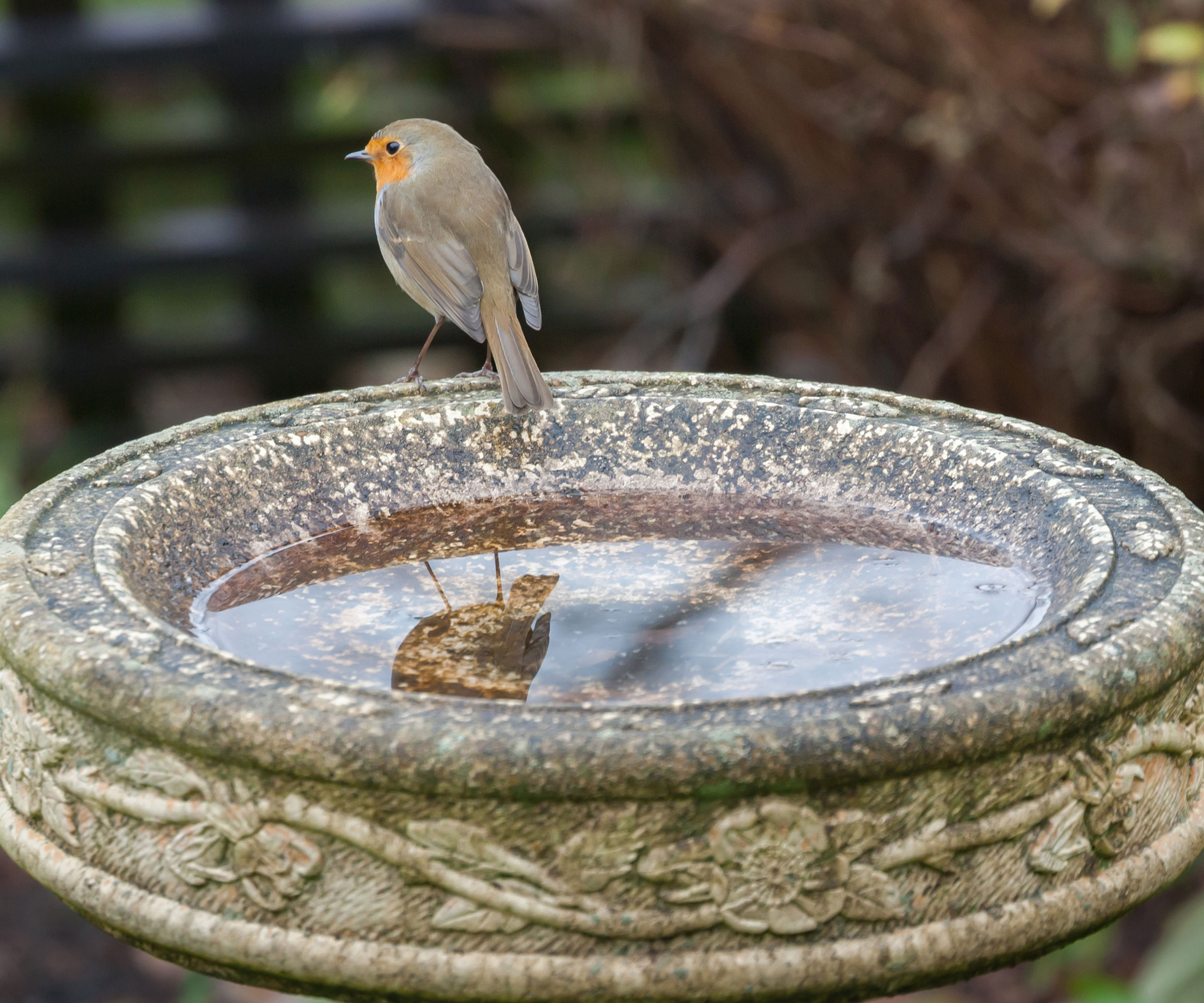
Don’t Let Bird Bath Mistakes Keep Birds Away
Not wishing to ruffle any feathers (sorry), but bird bath problems can catch out unsuspecting wildlife lovers both before and after setting up their paddling zone of choice. You might be so enamoured of attracting large numbers of birds that you don’t consider whether you are catering for specific bird sizes (or, indeed, putting them off). Your well-proportioned blue jay may not be too fussy about the dimensions of your bird bath, but what about smaller garden birds like finches and sparrows (and here in the UK, the dainty tit tribe or diminutive wren)?
Poor maintenance and hygiene fails can also lead to the bird bath blues. And just in case the last couple of decades of home improvement shows hadn’t quite made this clear, birds are just as particular as us when it comes to the golden mantra: location, location, location. So read on to find out how to avert disaster and ensure that your feathered chums make regular (and happy) visits to your bird bath.
1. Choosing the Wrong Material or Size
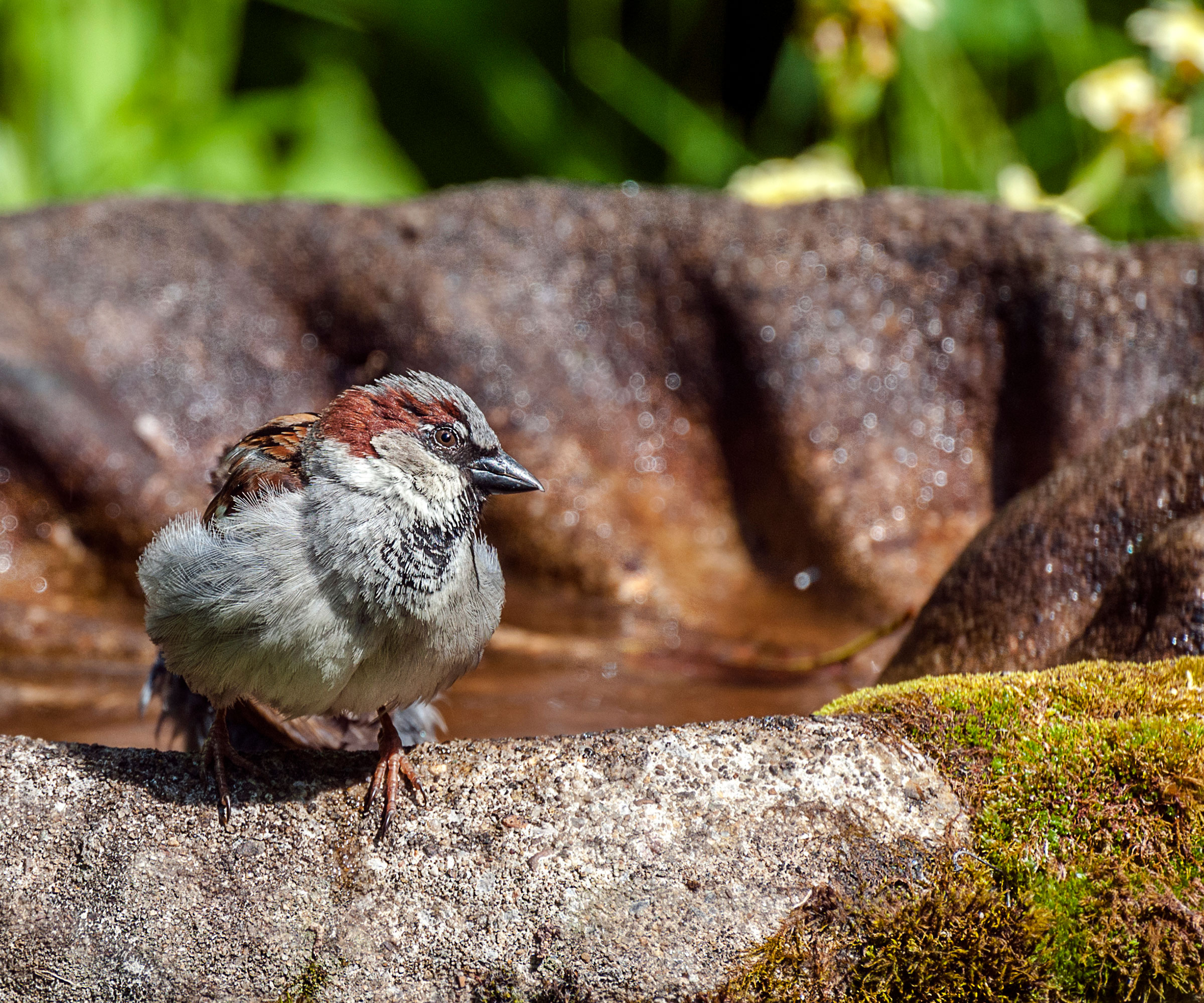
It’s a tough call, picking a bird bath size that will accommodate as many different species as possible. The risk is that by trying to suit as many species as possible, you pick something intimidating that limits your options. Ironically, choosing the biggest bird bath you can in the hopes of fitting in multitudes can often have the opposite effect. Little birds (especially younger or nervous types) will likely be deterred or threatened by capacious basins. What might seem idyllic for finches and chickadees won’t suit tiny songbirds or hummingbirds.
Sign up for the Gardening Know How newsletter today and receive a free copy of our e-book "How to Grow Delicious Tomatoes".
That said, there is a balance to strike, as teeny, weeny bowls won’t retain water for as long. To avoid making bird bath mistakes relating to size, consider which birds you are most keen to see. Ideally, you are looking for something that will allow for multiple visitors at a time. However, it needs to be inviting and reassuring – a safe place to land, literally. Above all else, make sure the level of water is shallow (a couple of inches is ideal) and non-slippy. Granular, textural surfaces, with plenty of ‘standing room’, permit the most reassuring entry and exit points for shy and flighty guests. A gentle gradient in the base is ideal.
While many bird-lovers may have themed tonal gardens designed with specific colors, it’s wise to avoid bright whites in a bird bath, as they can be off-putting to many species. Finally, consider the heat absorbency of the material you select for your bird bath. Metals run the risk of becoming much hotter in summer, making it painful (or impossible) for birds to relax.
2. Picking the Wrong Location or Height
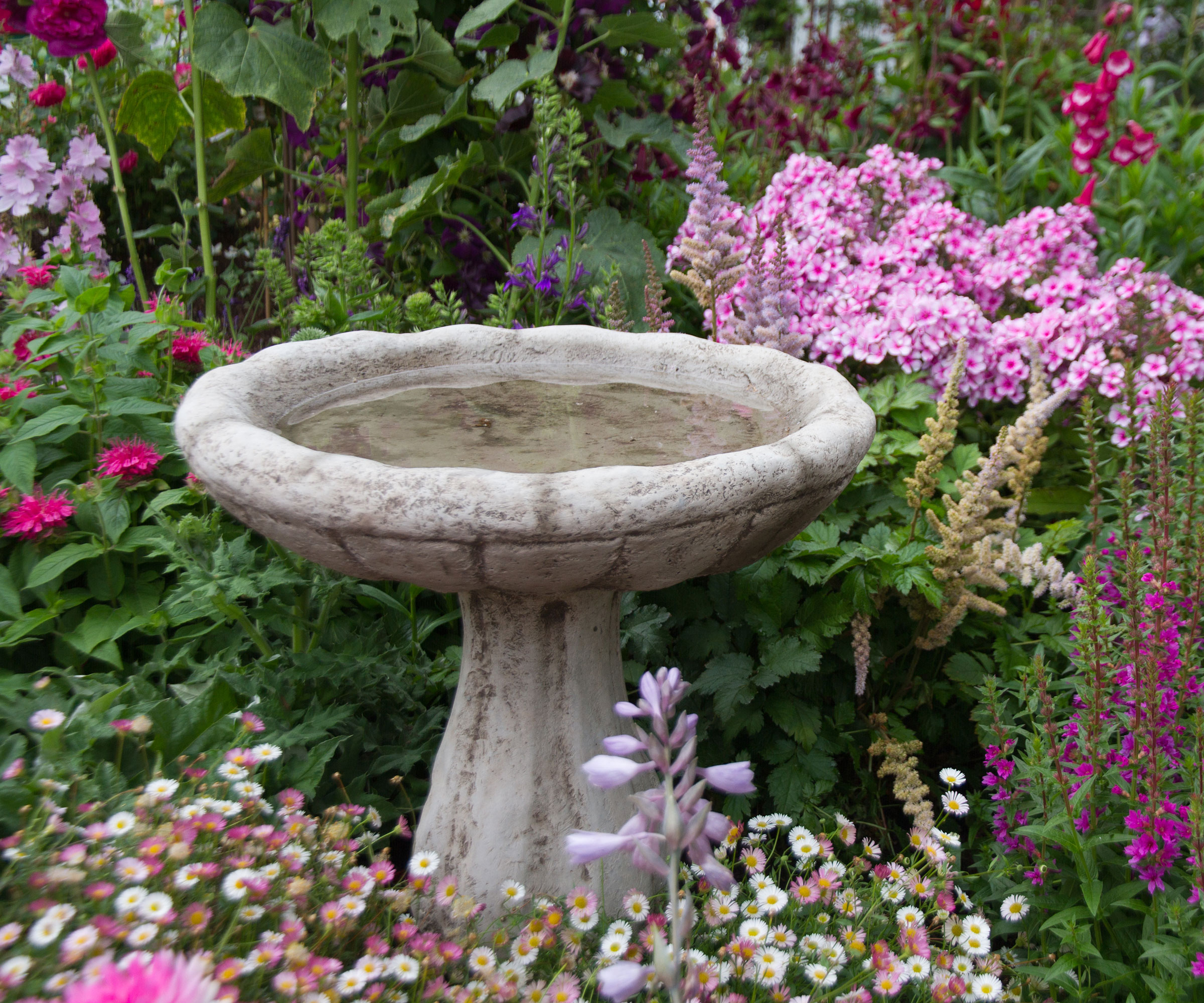
You might think bird bath height is one of the least important considerations to factor in for creatures that can fly. But once birds have landed on the bird bath and start splashing about, their guard is down and they want to feel safe. If your bird bath is too readily accessible to potentially predatory animals like cats, this can quickly deter potential feathered visitors – or worse, spell disaster. ‘To discourage pets or raccoons, you need to place bird baths where animals cannot reach them easily,’ says Gardening Know How’s Susan Albert. ‘Do this by elevating the bird baths, or by hiding them behind other structures or shrubs.’
As well as being high, bird bath planters should be placed in areas where birds have a clear view of potential threats. This means keeping low-level grassy areas around planters clipped so potential predators like cats have fewer places to hide. Make sure tall bird bath planters are sturdy and well secured – it might sound obvious, but it’s amazing how often bathing sites can fall foul of toppling on account of a lusty pet’s acrobatics. Another way around the issue of predators is to use some form of ‘floating’ device for your bird bath. ‘You can create a hovering bird bath quite easily using a large, shallow saucer and a tomato cage set into the ground,’ says Gardening Know How’s Mary Ellen Ellis.
Garden position is another area in which bird bath problems can arise. While it’s crucial to be mindful of predators, you also want to create a secluded, protected area where birds won’t feel overlooked. Nearby cover in the form of small trees and shrubs can work wonders, as it gives birdies a natural hiding place should cats wander into view.

Mary Ellen Ellis has been gardening for over 20 years. With degrees in chemistry and biology, Mary Ellen's specialties are flowers, native plants, and herbs.

After graduating from Oklahoma State University with a degree in English, Susan pursued a career in communications. In addition, she wrote garden articles for magazines and authored a newspaper gardening column for many years. She contributed South-Central regional gardening columns for four years to Lowes.com. While living in Oklahoma, she served as a master gardener for 17 years.
3. Failing to Keep it Clean
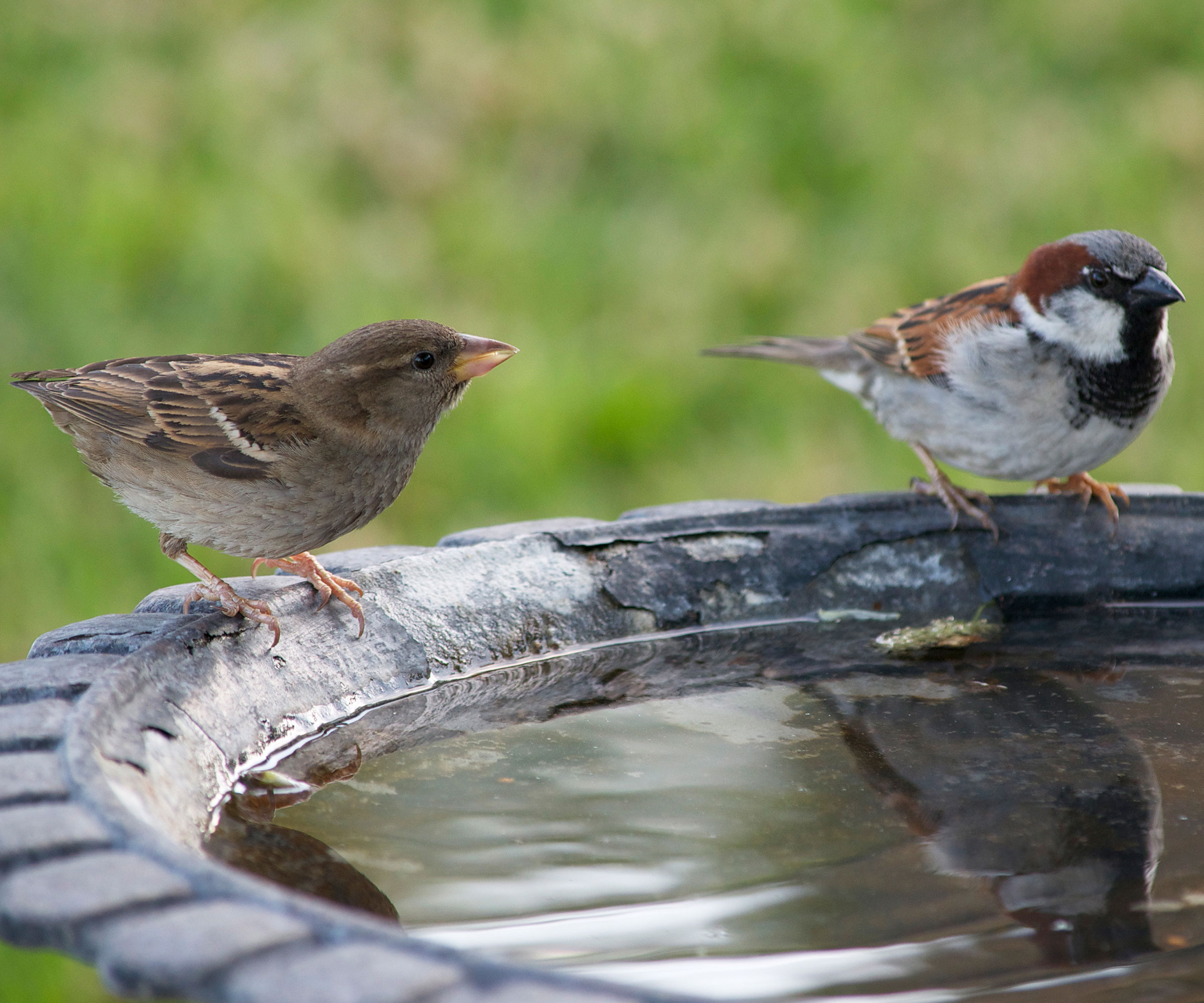
One of the most potentially harmful bird bath mistakes, a dirty bird bath is also one of the simplest to avoid. Common sense (and the size of the bath) should dictate the extent to which you will need to clean. If you are on top of water cleanliness, you will be alleviating the need for a trickier and more extensive job a few weeks down the line. So don’t put this one off, hoping the birds won’t notice – or won’t mind. Garden detritus can quickly build in water containers, but that’s nothing compared to what might happen to the water itself. Unclean bathing areas take no time to develop algae and algal toxins, as well as a host of bacteria.
Unwashed bird baths can be a breeding ground for infections and cross-contaminations, including salmonellosis, which is carried by fecal waste. So try to keep on top of this very simple task while it’s still simple. Depending on the texture of the bathing surface, a cloth or sponge and a light vinegar solution should be more than sufficient to restore a clean bird bath. Finding a few moments for this once a week will keep little visitors safe and happy.
4. Neglecting the Bath During Cold Spells
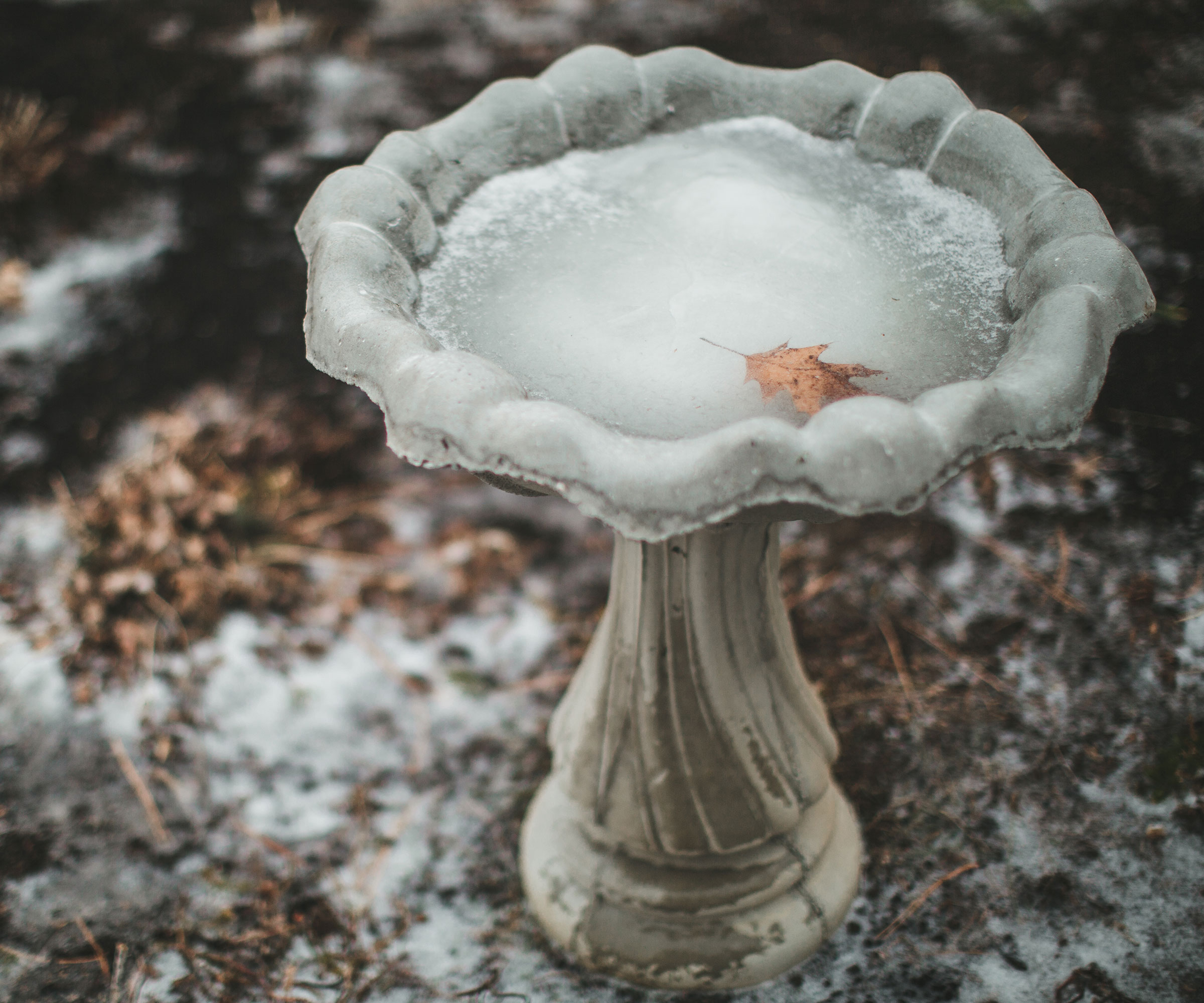
Your halcyon visions of bird baths may well involve sunny, heat-soaked days with feathered guests splashing about, but the reality is that birds seek out water supplies at any time of year, both for sustenance and cleaning. However, quite often, our attentions are diverted elsewhere in the chillier months of the year. One of the biggest bird bath problems is preventing water sources from freezing over – and taking swift action when things ice up.
It’s possible to empty the bird bath on colder nights and replenish in the morning, but you might find this taxing. To prevent water freezing, many gardening experts swear by the old practice of leaving a ball bobbing about in the water. Depending on the size of the bath, this can be a ping pong or tennis ball. The motion of the ball is a cheap way to prevent icing over.
The alternative is to set up a heating system that regulates bird bath water temperatures. This may well be the smarter option if your winters are especially harsh, although it will cost you. Also, most heaters require an electrical outlet positioned close by. Still, they can save you time. ‘There are numerous electric heater designs, plus you can DIY your own in a regular bird bath,’ says Gardening Know How’s Bonnie Grant. ‘You can also try a cordless bird bath heater using solar energy.’ Solar options make for better bird baths in sunny spots, but just bear in mind that they might not be as effective when the weather is overcast.

Bonnie Grant is a professional landscaper with a Certification in Urban Gardening. She has been gardening and writing for 15 years. A former professional chef, she has a passion for edible landscaping.
5. Forgetting Fresh Water – or Any Water
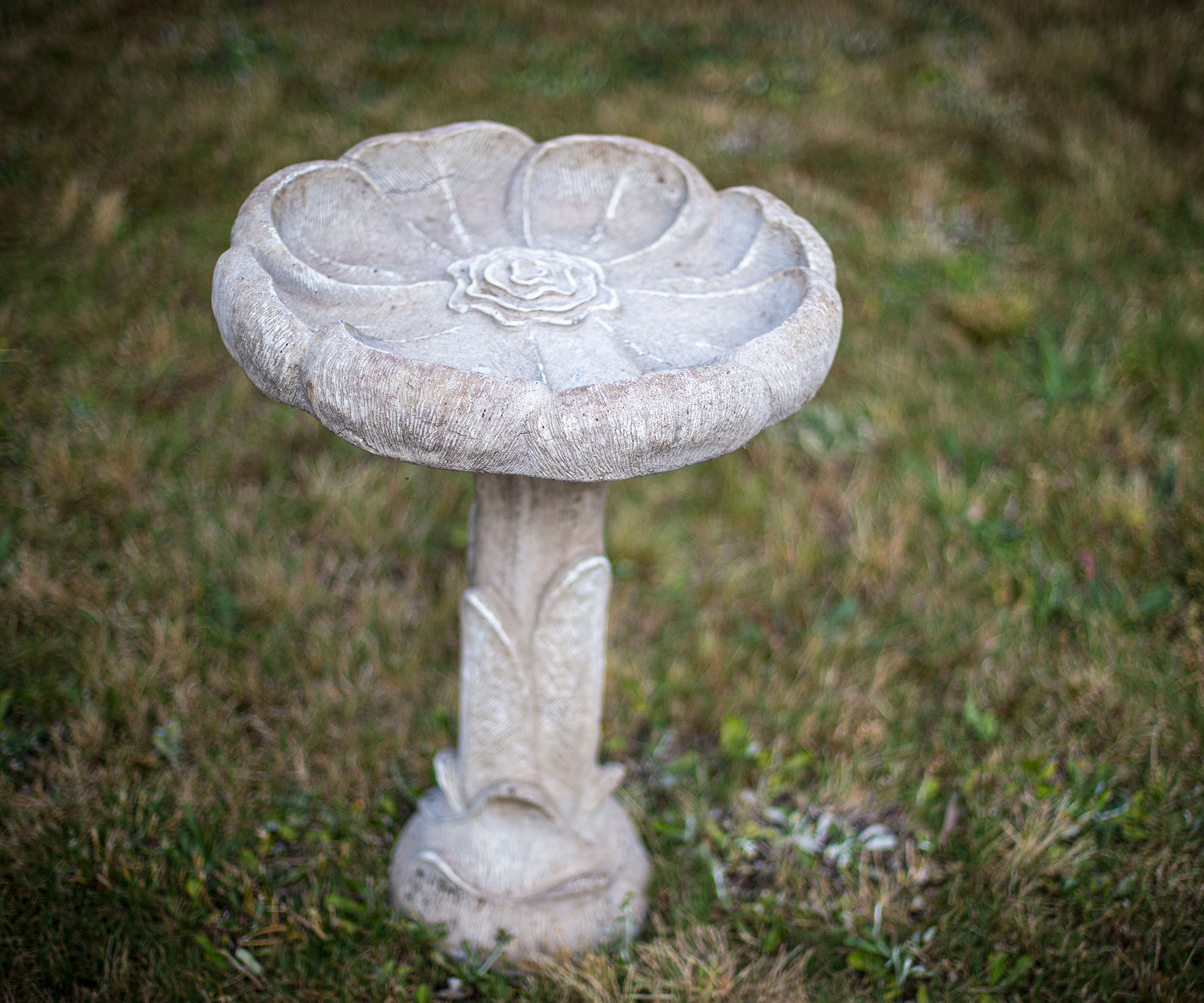
As an extension of bird bath cleanliness, some of the worst bird bath mistakes come about from forgetting to maintain fresh water supplies. Stagnant water (and its attendant infections) is amongst the biggest threats birdlife can face. It might seem like a cruel twist that kind gestures designed to encourage healthy, happy birds can take such a nasty turn.
But that’s the danger if you neglect to maintain a good water supply. Alongside cleaning the bath itself, make sure you are taking regular steps to replenish and replace water regularly. Pumps and automated watering systems can help keep water supplies in motion. But if we’re talking about drinking water, nothing is going to taste as good to birds as the fresh stuff.
And yes, let’s save the worst mistake until last – forgetting to replace the water at all. In summer months, bird bath water quickly evaporates. At other times, an empty bird bath left idle for days (or even weeks) on end is a tragic indication that someone’s wildlife priorities require a reboot.
We understand sometimes life gets in the way, and even our best intentions are going to get derailed occasionally. But as far as you can, make sure that as a bird lover, you’re making regular time for these little routines. That way, they are easier to manage, and quicker to carry out – and you’ll never again need to wonder where the birdies went.
Frequently Answered Questions
Do You Put Rocks in a Bird Bath?
It’s not always necessary to put rocks in a bird bath. If the dish or bowl is shallow or has a gentle incline, and if there are ample places for the bird to perch both before and after bathing, things should be fine. However, rocks can be helpful in situations where the base of the bird bath bowl is uneven and any part of the bowl might be deeper than a couple of inches, or if you suspect the bottom might be a little slippery.
Creating an ‘island’ of rocks centrally, or a walkway around the edge of the bowl, affords birds an extra level of reassurance and comfort. Texture is key, but ensure that any rocks you do add are safe for little birdie feet. Also, as well as rocks, make sure there are other landing sites nearby for your little visitors to retreat to, such as a bird-friendly hedge, a bird table or a small tree.
Should You Put Pennies in a Bird Bath?
Pennies and cents containing copper can have magical properties if used in bird baths. They don’t just glisten and glint in the sunlight: they can also affect the quality of the water in the bird bath. For those of you who might struggle to swap out old water with fresh every day (which is still the best course of action), a few coins containing small amounts of copper have been recognized as actively reducing the rate at which algae develops.
As already explained, the one thing you want to avoid is dirty water – and minimizing the levels of algae is one of the kindest acts you can perform as part of your regular bird bath duties. The presence of algae can quickly lead to other bird bath problems, ranging from mosquitoes to serious infections. Using pennies, you can ease the burden. However, it’s important to stress that this shouldn’t be viewed as an alternative to topping up the bath with regular fresh water.
Which Color Bird Bath Attracts the Most Birds?
Implausible as it might sound, the color of a bird bath is an important consideration. If you’ve addressed all the mistakes above, and you’re still finding it tricky enticing winged visitors to your yard, then maybe color is holding you back. According to the Royal Society for the Protection of Birds (RSPB), silver and blue are appreciated by many bird varieties, with silver having year-long appeal. Green is another smart choice for attracting birds, particularly if you wish to attract goldfinches, thrushes and doves.
Reds and yellows, while attractive to certain species such as hummingbirds, are less appealing to others – this is because, in nature, they are quite often associated with danger. ‘Neutrals’ like brown or gray are less likely to ‘trigger’ birds negatively and make nice camouflage colors to keep birds safe from potential predators. If you can’t do anything about the color of the bird bath itself, it might be worth adding elements of blues, greens and silvers amongst neighboring plants or man-made features to attract your feathered buddies.

Janey is a former assistant editor of the UK’s oldest gardening magazine, Amateur Gardening, where she worked for five years. For the last few years, she has also been writing and editing content for digital gardening brands GardeningEtc and Homes & Gardens. She’s taken part in a range of conservation and rewilding projects for the Royal Horticultural Society (RHS) and the British Trust for Conservation Volunteers (BTCV) as a way of exploring her horticultural horizons. She is currently undertaking her RHS Level 2 certificate in The Principles of Plant Growth and Development.